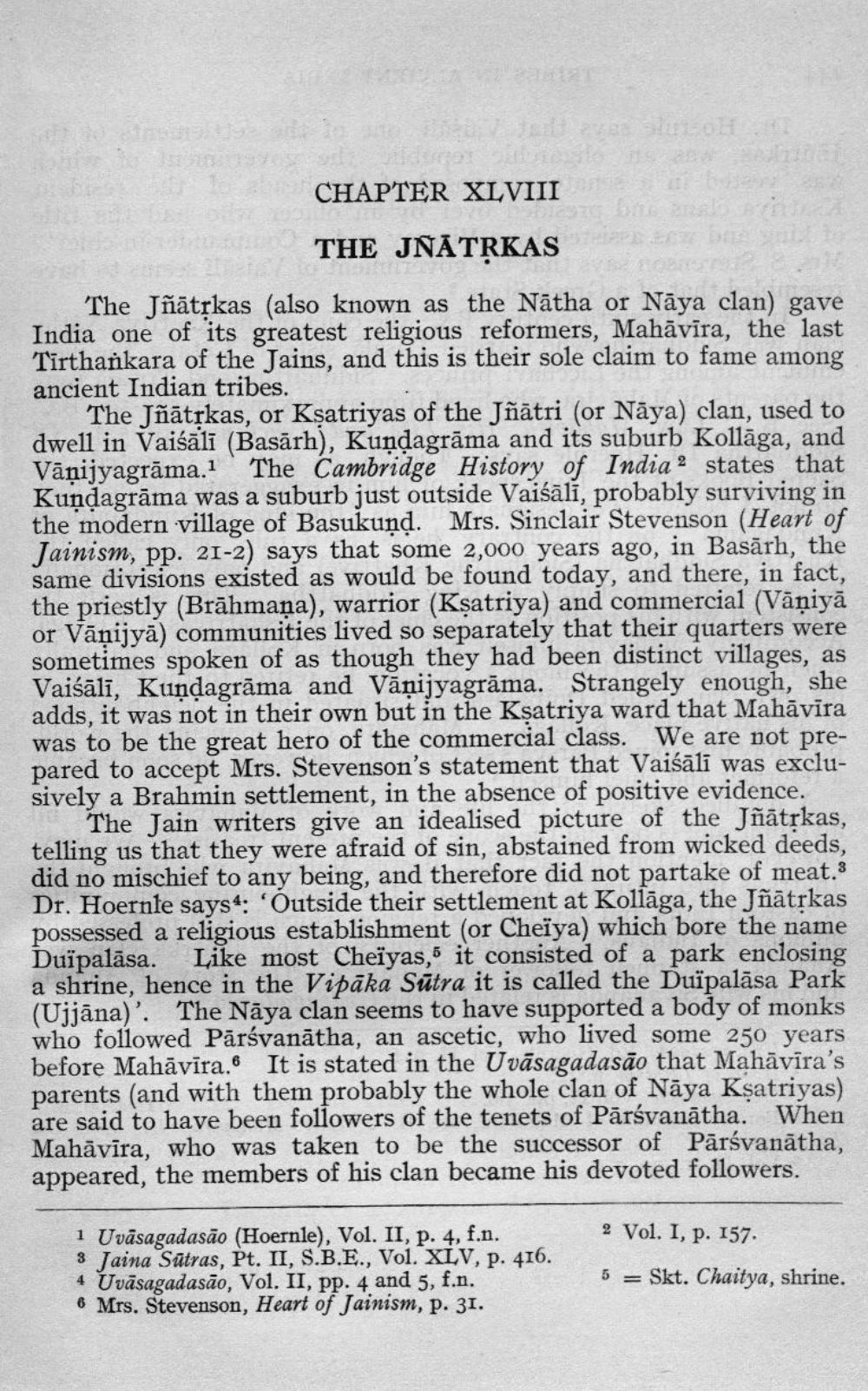________________
CHAPTER XLVIII
THE JNĀTRKAS The Jñātņkas (also known as the Nātha or Nāya clan) gave India one of its greatest religious reformers, Mahāvīra, the last Tirthankara of the Jains, and this is their sole claim to fame among ancient Indian tribes.
The Jñātrkas, or Ksatriyas of the Jñātri (or Nāya) clan, used to dwell in Vaiśālī (Basārh), Kundagrāma and its suburb Kollāga, and Vāņijyagrāma.1 The Cambridge History of India 2 states that Kundagrāma was a suburb just outside Vaiśāli, probably surviving in the modern village of Basukuņd. Mrs. Sinclair Stevenson (Heart of Jainism, pp. 21-2) says that some 2,000 years ago, in Basārh, the same divisions existed as would be found today, and there, in fact, the priestly (Brāhmaṇa), warrior (Ksatriya) and commercial (Vāņiyā or Vāņijyā) communities lived so separately that their quarters were sometimes spoken of as though they had been distinct villages, as Vaiśālī, Kundagrāma and Vānijyagrāma. Strangely enough, she adds, it was not in their own but in the Ksatriya ward that Mahāvīra was to be the great hero of the commercial class. We are not prepared to accept Mrs. Stevenson's statement that Vaiśāli was exclusively a Brahmin settlement, in the absence of positive evidence.
The Jain writers give an idealised picture of the Jñātrkas, telling us that they were afraid of sin, abstained from wicked deeds, did no mischief to any being, and therefore did not partake of meat.3 Dr. Hoernte says4: 'Outside their settlement at Kollāga, the Jñātrkas possessed a religious establishment (or Cheïya) which bore the name Duïpalāsa. Like most Cheïyas, 5 it consisted of a park enclosing a shrine, hence in the Vipāka Sūtra it is called the Duïpalāsa Park (Ujjāna)'. The Nāya clan seems to have supported a body of monks who followed Pārsvanātha, an ascetic, who lived some 250 years before Mahāvīra. It is stated in the Uvāsagadasāo that Mahāvira's parents (and with them probably the whole clan of Nāya Ksatriyas) are said to have been followers of the tenets of Pārsvanātha. Whe Mahavira, who was taken to be the successor of Pārsvanatha. appeared, the members of his clan became his devoted followers
1 Uvāsagadasão (Hoernle), Vol. II, p. 4, f.n. 3 Jaina Sätras, Pt. II, S.B.E., Vol. XLV, p. 416. 4 Uvāsagadasāo, Vol. II, pp. 4 and 5, f.n. 6 Mrs. Stevenson, Heart of Jainism, p. 31.
2 Vol. I, p. 157. 5 = Skt. Chaitya, shrine.




